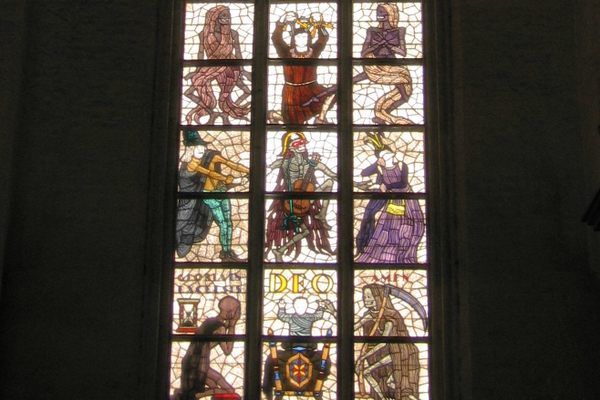About
As you walk through the hushed ambiance of the Cathedral of Segovia, taking in the colors of the stained glass windows and admiring the splendid Gothic architecture, your eyes may settle on a curious painting hanging on the wall.
A riotous party is taking place in the bough of a tree symbolizing life, complete with food, live music, and merriment. Meanwhile below, a sinister skeleton hacks dementedly at the trunk of the tree with a scythe. Nearby a pudgy hamster-sized devil aids death by tugging on a rope wrapped around the tree to bring it tumbling down, while the figure of Jesus Christ stands close, preparing to ring the bell of mortality.
Although the scene portrayed in this memento mori may seem slightly comical by today's standards, the allegory would likely have instilled fear and dread in the 17th century when seen through the eyes of a peasant visiting the cathedral to pray or confess their sins. Even today, the painting, called The Tree of Life (El Arbol de la Vida), retains a certain power to provoke thoughts in the visitor about the past ages gone by and the finitude of life.
Unfortunately, not much is known about the painter other than his name, Ignacio de Ries, and that by his death in 1661 he produced just over a dozen religiously inspired paintings that today grace the walls of several cathedrals across Spain.
Related Tags
Know Before You Go
The painting is one of many that hangs in the Immaculate Conception Chapel (Capilla de la Concepción) in Segovia Cathedral.
Community Contributors
Added By
Published
October 17, 2018










































